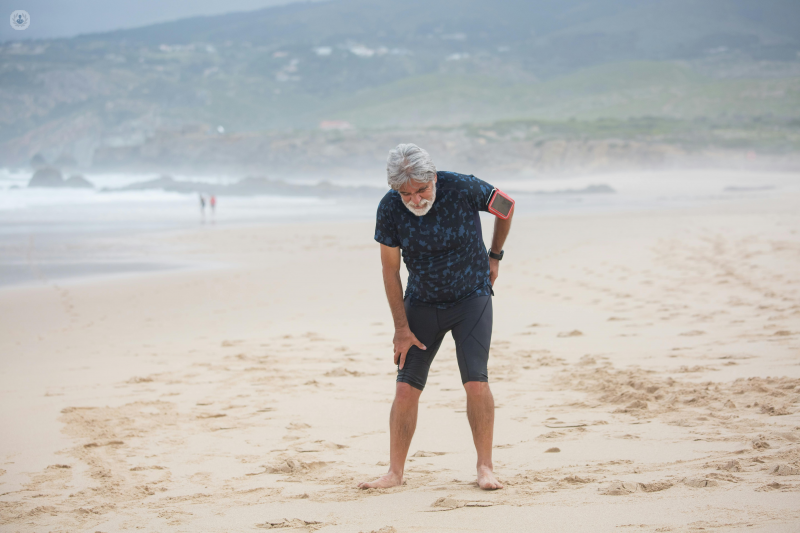A guide to brachialgia for patients and caregivers
Autore:Leading consultant in pain management Dr James Blackburn explains everything you need to know about brachialgia, including causes, symptoms and treatment methods.

What is brachialgia?
Brachialgia, commonly referred to as arm pain, is a condition characterised by sharp, burning, or shooting pain that radiates from the neck down to the arm. This condition is often associated with nerve compression or irritation in the cervical spine, which is the portion of the spine located in the neck.
What causes brachialgia?
Several factors can lead to brachialgia. The most common cause is a herniated disc in the cervical spine. Discs are the cushions between the vertebrae, and when one of these discs bulges or ruptures, it can press on a nerve, leading to pain. Another common cause is cervical spondylosis, which refers to age-related wear and tear affecting the spinal discs and neck bones. This condition can lead to bone spurs that also compress the nerves. Additionally, conditions such as spinal stenosis, where the spinal canal narrows, or trauma to the neck can result in brachialgia.
What are the symptoms?
The symptoms of brachialgia can vary widely in severity and nature. Patients typically experience a sharp, burning, or shooting pain that radiates from the neck down the arm. This pain can be accompanied by tingling or numbness in the arm or fingers, and occasionally, weakness in the arm or hand. The pain is often exacerbated by certain movements or positions of the neck, such as tilting or turning. For some individuals, the discomfort can be constant, while for others, it may come and go.
How Is brachialgia treated?
The treatment of brachialgia depends on the underlying cause and the severity of the symptoms. For many patients, conservative treatments can be effective. These include:
Rest and activity modification
Reducing activities that exacerbate the pain can help alleviate symptoms. It’s important to avoid heavy lifting or repetitive neck movements.
Physical therapy
A physiotherapist can provide exercises designed to strengthen the muscles around the neck and improve posture. These exercises can help relieve pressure on the affected nerves.
Medications
Over-the-counter pain relievers like ibuprofen or paracetamol can help manage pain. In some cases, doctors may prescribe stronger pain medications or muscle relaxants.
Steroid injections
For severe pain, corticosteroid injections can reduce inflammation around the affected nerve, providing significant relief.
Surgery
In cases where conservative treatments fail to provide relief, or if there is significant nerve compression leading to muscle weakness, surgical options may be considered. Procedures such as a discectomy (removal of a herniated disc) or spinal fusion may be necessary to alleviate pressure on the nerve.
Brachialgia can be a debilitating condition, but with appropriate treatment, most patients can achieve significant relief from their symptoms. If you or a loved one is experiencing symptoms of brachialgia, it is important to consult with a healthcare professional for an accurate diagnosis and tailored treatment plan.
If you would like to book a consultation with Dr Blackburn, do not hesitate to do so by visiting his Top Doctors profile today.


